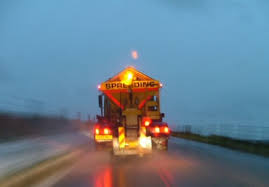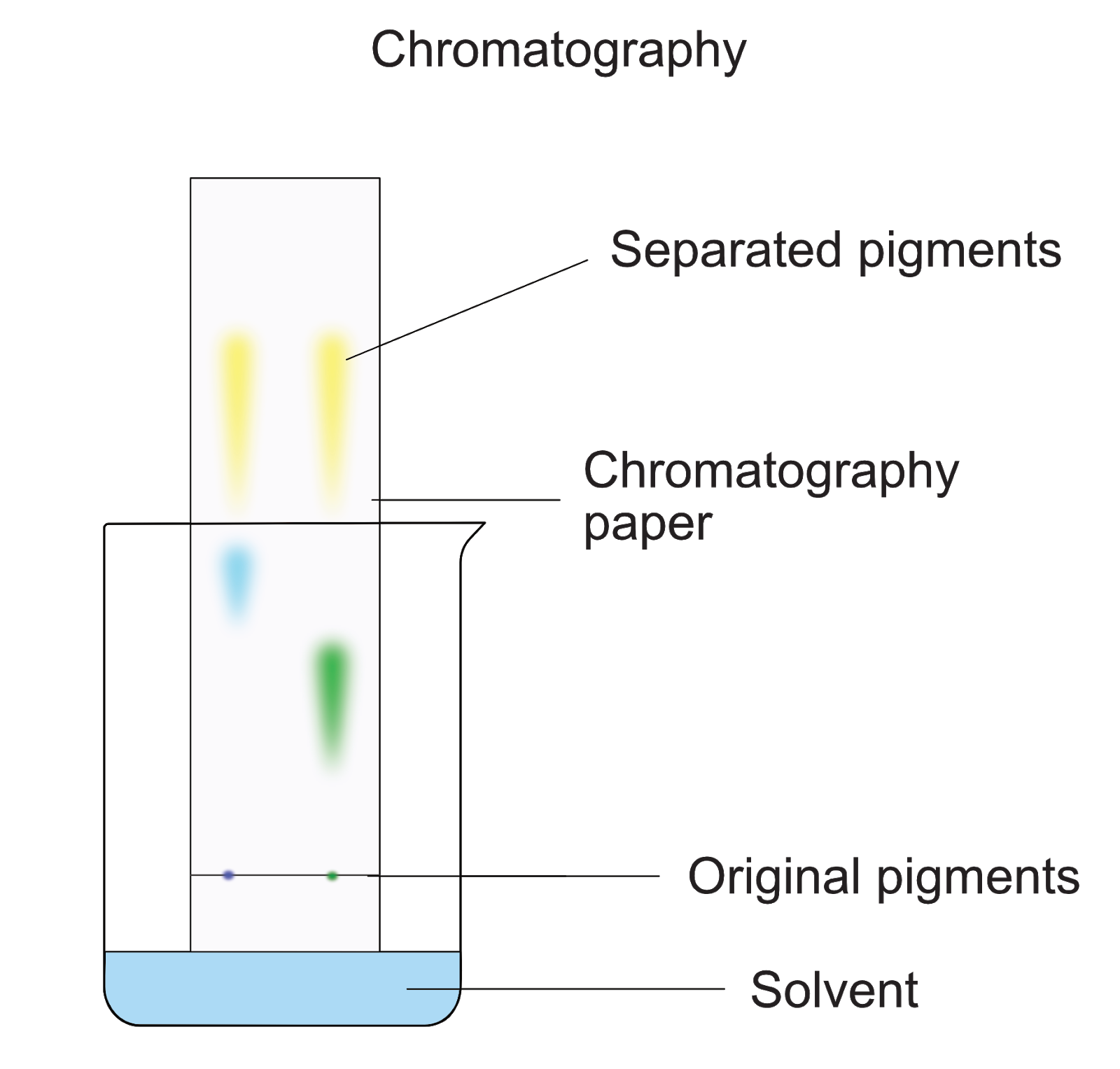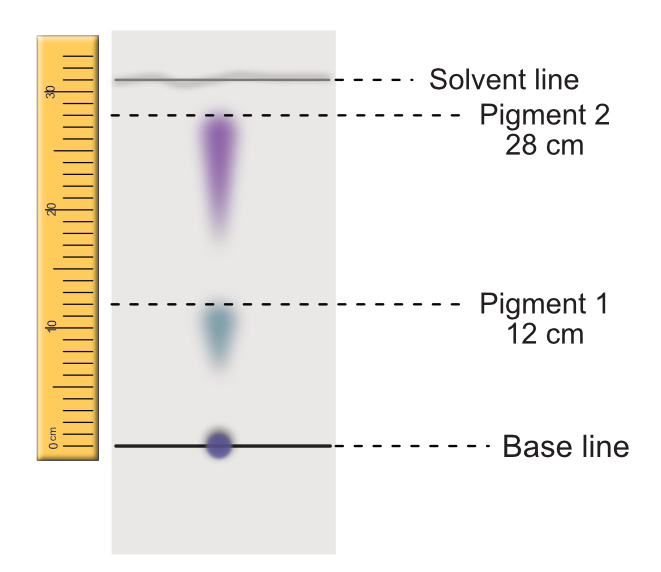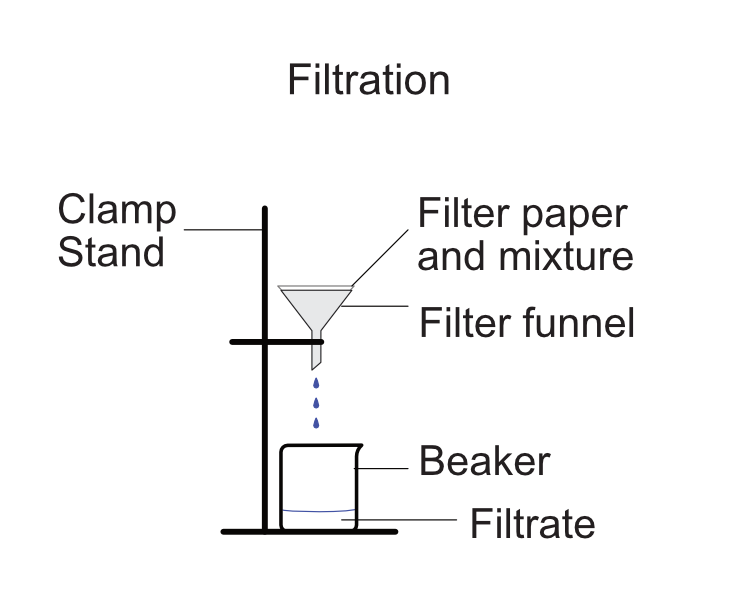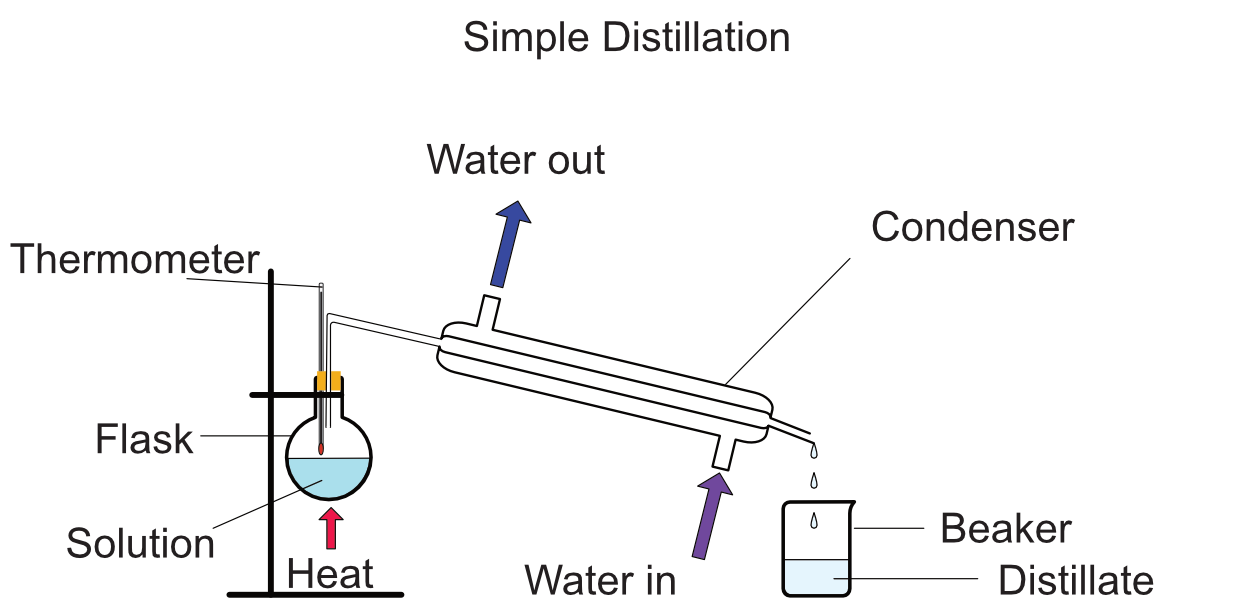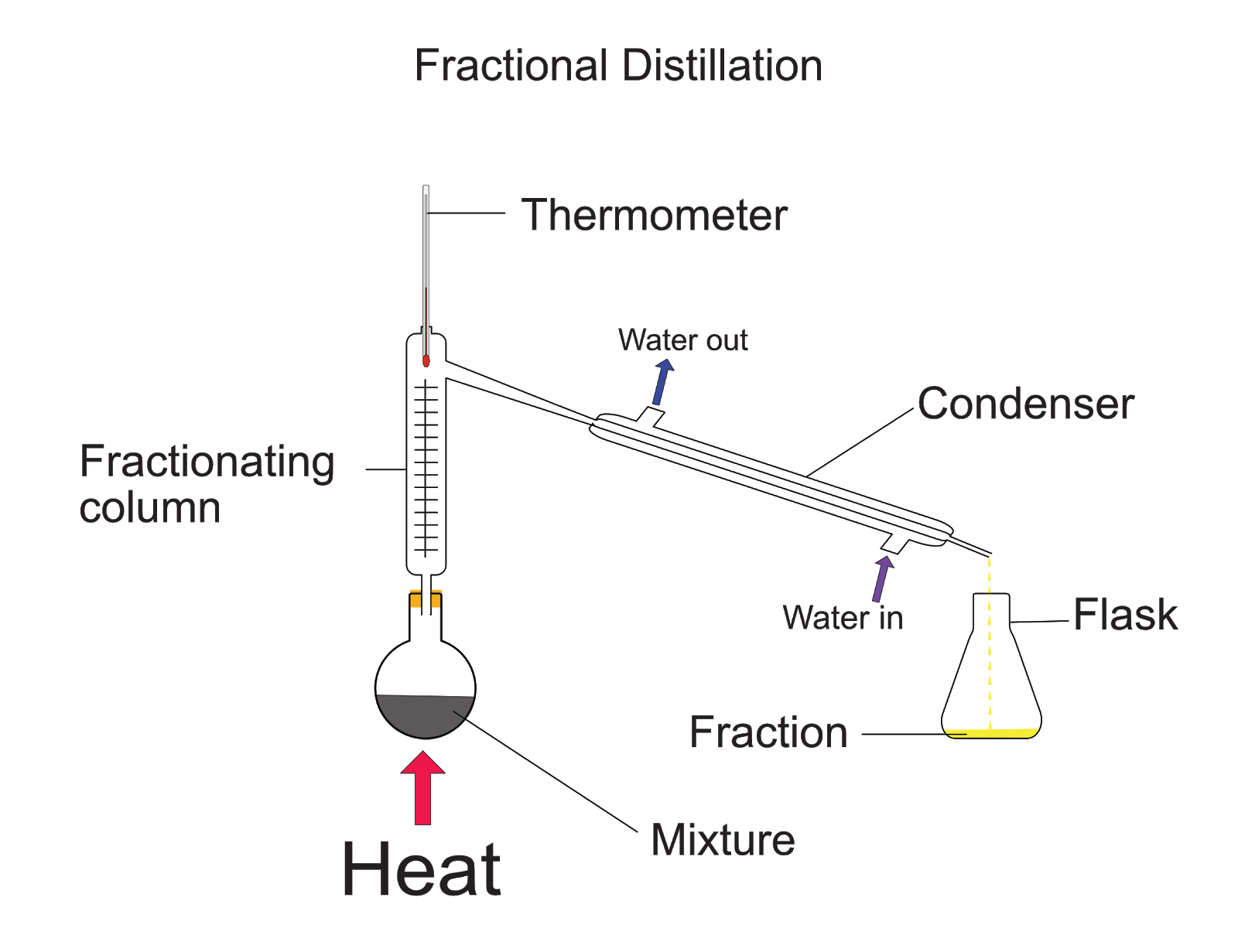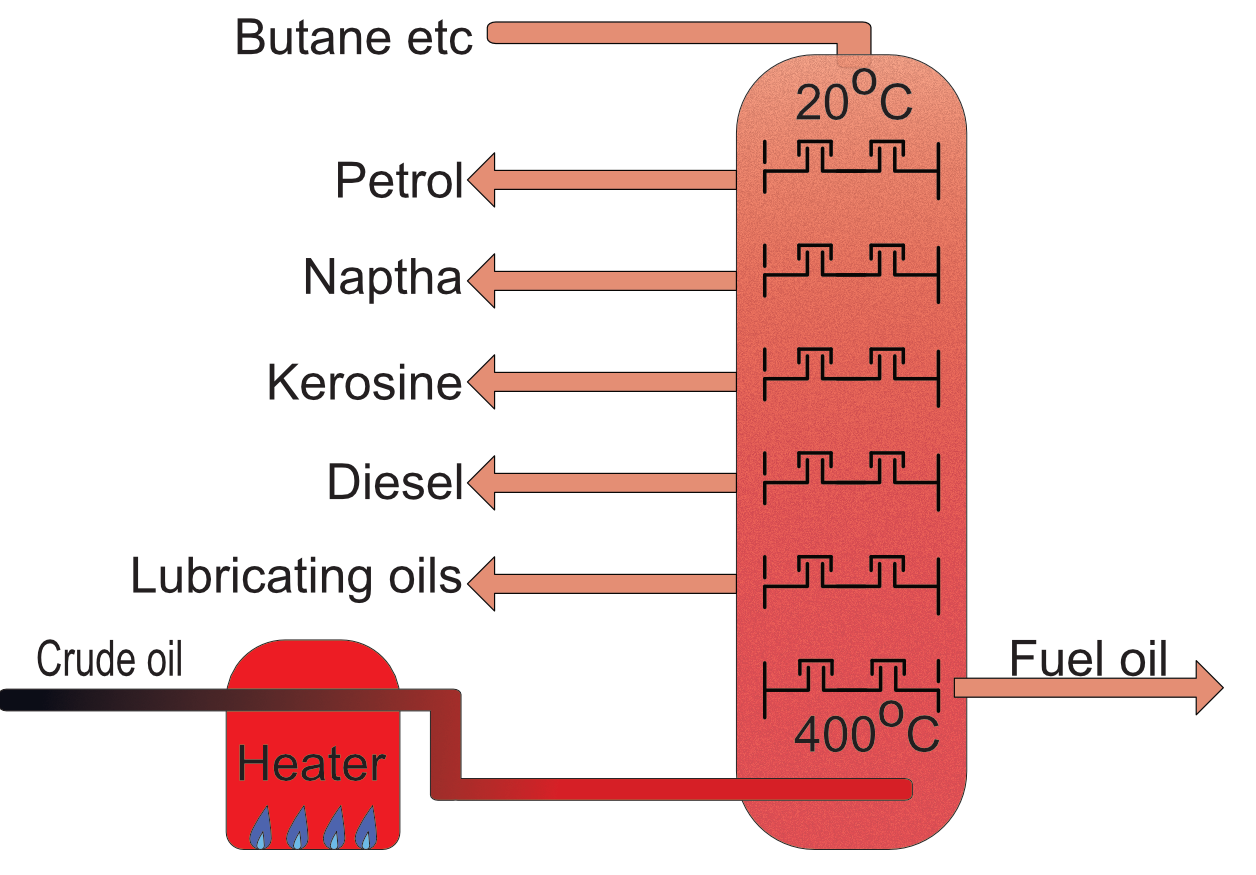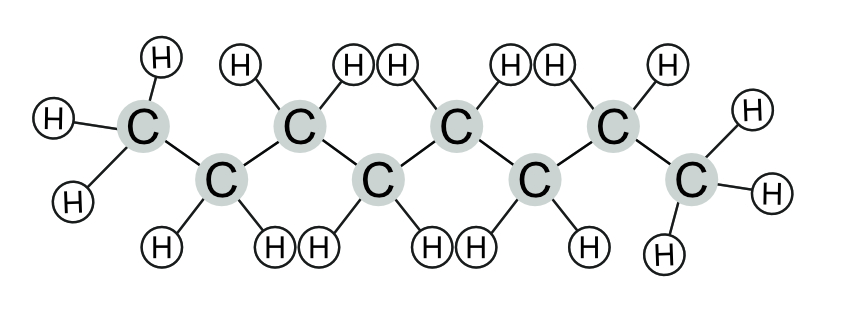Purity and Mixtures
Purity
The term pure in chemistry means a substance that contains only one element or compound. Everything else is a mixture and is, therefore, impure.
This is a term that is commonly misused in everyday English when referring to chemicals such as air and water. Air is a mixture of gasses, including nitrogen, oxygen, carbon dioxide and water vapour, as such it is always chemically impure. Water can be pure H2O, but in practice even the most clean and natural water contains other elements and compounds including dissolved salts and minerals. Distilled water which is used in many chemical experiments is chemically pure water as the other chemical have been removed.
Examples
| Pure Chemicals | Impure chemicals / mixtures |
| Distilled water H2O | Tap water: water and mineral salts |
| Oxygen O2 | Bottled water: water and mineral salts |
| Carbon C | Air: N2, O2, CO2, Ar, water vapour |
| Glucose C6H12O6 | Brass: copper and zinc |
| Carbon dioxide CO2 | Crude oil: combination of hydrocarbons |
| Copper sulphate (solid) CuSO4 | Copper sulphate (solution): CuSO4 plus H2O |
| Sodium Chloride (solid) NaCl | Sodium chloride (solution): NaCl plus H2O |
Note:__ Any solution of a substance is chemically impure__, this is because it contains at least two chemicals; the solute dissolved in the solvent to make the solution. In the table above copper sulphate is a solute dissolved in the water, the solvent, to make a the mixture of copper sulphate solution.
Determining if a substance is pure or impure.
All chemicals, whether they are a compound or an element, have specific boiling points and melting points. If a substance is impure these temperature will be slightly different. Measuring the boiling point or melting point of a substance can determine if it is pure or impure.
Pure water freezes at 0C but a 10% salt solution has a freezing point of -6C, this is why roads are gritted with salt to lower the temperature at which ice will form on the roads. Adding salt to water increases the temperature at which it will boil. Adding about 30g of salt to a litre of pure water will raise its boiling point to 100.5C.
Useful Mixtures
There are a great many uses for chemical mixtures, including very simple mixtures such as salt water or saline. This is used for preserving foods, as well as storing contact lenses when sterile. Mixtures that contain at least one metal are known as alloys. These have the advantage of combining the properties of different metals and non-metals to make a mixture with new more useful properties.
Iron is one of the most commonly used materials in construction and manufacturing, but in its pure form it is weak and rusts very easily. Combining it with other elements to make an alloy can overcome these problems. Iron combined with carbon makes the alloy steel. This is much stronger than pure iron, if it is also combined with chromium it can produce Stainless Steel that is both strong and does not rust or tarnish easily.
In the early stages of the civilization of humankind, people learnt to use copper from copper ore, but pure copper is very weak and easy to bend and dent. It is very poor at being sharpened so makes a very poor quality knife. However, adding tin to copper makes an alloy called bronze, this is much stronger and easier to sharpen, making it a more versatile and useful material than copper alone.
Chromotagraphy
Chromatography is a separation technique that separates a mixture by allowing it to move along or through a stationary material. As each component will move at different speeds they gradually separate as they move through/across the material. The difference in the speed of movement of each component is a result of the differences in mass and size of the component molecules.
There are three main types of chromatography:
- Paper chromatography
- Thin layer chromatography
- Gas chromatography
All forms of chromatography have two phases:
- Stationary phase: the material that the components move through or across.
- Mobile phase: The mixture of components and the solvent that carries them.
Paper and Thin Layer Chromatography
These two types work in the same way, the only difference is the nature of the stationary phase. In paper chromatography the stationary phase is a strip of absorbent paper, this can be special chromatography paper or a strip of botting or filter paper. Thin layer chromatography uses a layer of silica gel on a rigid base made of glass, metal or plastic.
Paper chromatography of inks to show the pigment mixtures.
In both examples a pencil line is draw near the base of the stationary phase material and drops of the mixture are placed on the line. The bottom edge of the material is then placed in a solvent as shown in the diagram and left for a period of time. The solvent carries the mixture up the material and the different components spread out as shown.
A pure substance will only produce a single colour, an impure mixture will produce a range of colour spots or areas on the stationary phase material. This is one way of determining if a material is pure or impure.
Identifying Components Rf Values
The distance moved by a component is proportional to the distance moved by the solvent through the stationary phase material. This ratio of the distance moved by the solvent compared to the component is known as the Rf value of the component.
In this example a dye has been separated into this two pigments used to make it.
The solvent has moved a distance of 31 cm from the original base-line. Pigment 1 has moved 12 cm and pigment 2 a distance of 28 cm.
Pigment 1 Rf= 12 / 31 = 0.39
Pigment 2 Rf = 28 / 31 = 0.90
These could be compared to a set of reference values to find the name of the chemical used in each pigment. This is done in the fine art world to test the pigments used in paints from old pictures to test if the paint is modern and, therefore, a forgery.
Gas Chromatography
This is a more complicated and expensive form of chromatography using a very sensitive and expensive machine. In this form of chromatography the stationary phase is a liquid in a long tube, or column. The mobile phase is gas, often helium or nitrogen. The gas used must be inert so that it will not react with the liquid phase or the mixture. The inert gas carries the mixture along the tube and through the liquid, the separation occurs due to the differences in boiling points of the components of the mixture. These are detected by sensors in the machine.
All three methods can be used to determine if a substance is pure or impure and for analysing the components that make up a mixture.
Separation Techniques
Many chemical mixtures can be separated into their individual parts using a range of separation techniques. Each of these uses the differences in the physical properties of each part of the mixture. This can include the differences in their boiling or melting points, their mass, density or how they respond to an electrical current.
Filtration
A simple technique that separates solids from liquids or gases using a filter. These can be made of paper, ceramics, metals or plastics. The holes in the material determine the size of the solids that are trapped by the filters.
Crystallisation
To separate a solid that is dissolved in a solvent, the solution is either placed in a warm place for several hours/ days or is heated gently. The liquid solvent is either allowed to evaporate over a period of time or boiled off more rapidly. This will leave the solid solute behind. If the process is carried out slowly using evaporation to remove the solvent than many solids will form crystals. This ancient process was used by many civilizations to get salt from seawater, this is still used today.
Simple Distillation
Mixtures of liquids (and gasses) can be separated by using the differences in their boiling points. Where a mixture contains only a few liquids and only one of them is to be collected, this is known as simple distillation. It is commonly used in the making of spirits for industrial and consumer uses. In this process the alcohol is separated from the weak solution of alcohols and water from the brewing process to produce a stronger spirit for consumption or processing into other products.
The solution is heated to the boiling point of the liquid that is to be collected, in the case of alcohol production that is around 70oC. The alcohol will boil off but as this is below the boiling point of water this will remain as a liquid in the flask. The vapour is passed through a condenser that cools the vapour to below its boiling point turing it back into a liquid that can then be collected.
Many countries that have limited access to fresh drinking water use this simple distillation technique to separate the fresh water from the sea-water. The sea-water is heated to 100oC producing steam, this is then condensed to collect the water that is now desalinated.
Fractional Distillation
Some mixtures of liquids contain more than one useful material, each part, or fraction, of the mixture can be collected using fractional distillation. This is similar to simple distillation in that it heats a mixture to different temperature to turn the liquid into a gas that can then be collected and condensed. As the mixture contains different chemicals with different boiling points the mixture is heated to gradually heated up and held at each new boiling point until each fraction has been collected.
A fractionating column is used in this process, this has a series of ledges or layers inside that help to separate out the different fractions from the mixture.
In a commercial crude oil fractionating column the mixture is heated to turn nearly all the liquid mixture into gas, as this gas mixture passes up the column it is allowed to cool in a very control manner. As it cools each of the different hydrocarbon fraction is collected, starting with the ones with the highest boiling poins at the base of the column and the lowest ones at the top.
Fractional distillation of crude oil
Relative Formula Mass
All atoms have a specific mass (mostly concentrated in their nuclei), but the mass of a single atoms is very small. Using the actual mass of atoms and molecules is, therefore, impracticable.
The relative mass of an atom is measured as a fraction of the mass of a single Carbon-12 atom.
One unit of relative atomic mass is 1/12th of the mass of a Carbon-12 atom. In practice this is the atomic mass given in the periodic table for each element.
The relative atomic mass (Ar) is the average relative mass of a single element.
Carbon, for example has several different isotopes, each of which has a different atomic mass. The average of all these different isotopes gives carbon a relative atomic mass of 12.011.
Note: relative atomic mass Ar has no unit of measurement.
Do not try to memorise Ar values for any elements. They are given in the periodic table and a copy of this will be printing in the examination papers for you to use. Often the Ar values are rounded to a whole number. Always use the values given in the periodic table provided for the exam.
The mass of a molecule or compound is found by adding up the relative atomic masses of the atoms that make up the molecule / compound. This is known as the relative formula mass and is abbreviated to Mr.
Atomic Oxygen, O Ar= 16
Atmospheric oxygen, O2 Has__2__ atoms of oxygen so its relative formula mass, Mr = (16x2) = 32
Example 1
Relative formula mass of Water, H2O (Ar values: H = 1 and O = 16)
Mr = (Hx2) + O = (2x1) + 16 = 18
Example 2
Relative formula mass of Copper sulphate, CuSO4 (Ar values: Cu = 63.5, S = 32, O = 16)
Mr = Cu + S + (4xO) = 63.5 + 32 +(4x16) = 159.5
Balanced Chemical Equations
The law of conservation of mass tell us that in a chemical reaction the relative mass of the reactants must equal the relative mass of the products. The atoms have been recombined to make new chemicals but no atoms have been created or destroyed.
Example 1: Combustion of carbon.
Carbon + Oxygen → Carbon dioxide
C + O2 → CO2 (Ar: C = 12, O = 16)
Reactants:
C = 12
O2 = 2x16 =32
Total relative mass of reactants = 12 + 32 = 44
Product
CO2 = C + (2xO) = 12 + (2x16) = 44
Example 2
Magnesium + Hydrochloric acid → Magnesium chloride + Hydrogen
(Ar: Mg = 24, Cl = 35.5, H = 1)
Mg + 2HCl → MgCl2 + H2
24 + 2(1 + 35.5) → 24+(2 x 35.5) + (2 x 1)
24 + 2(36.5) 24+(71) + 2
24 + 73 95 + 2
97 → 97
Total relative mass of reactants = Total relative mass of products
Empirical Formula
The formula of a molecule gives the number of each atom that makes up a single molecule of a given chemical.
Carbon dioxide is CO2, so it has 1 atom of carbon and 2 of oxygen.
Sulphuric Acid is H2SO4 so it has 2 atoms of hydrogen, 1 of sulfur and 4 of oxygen.
These formula are known as the molecular formula, they provide the structure of the molecule.
The empirical formula is the formula of a compound in the simplest whole number ratio of elements in a molecule.
CO2 can not be simplified so it is both the molecular and the empirical formula of carbon dioxide.
C6H12O6 is the molecular formula of glucose. This can be simplified as all the values can be divided by 6 to given whole numbers. The empirical formula is, therefore: CH2O.
Example 1
Octane is a hydrocarbon produced from crude oil and is used in the production of petrol.
From the diagram of the molecule the molecular formula can be deduced by counting the number of each atom in turn.
There are eight carbon atoms and eighteen hydrogen atoms. This gives a molecular formula for octane as, C8H18.
8 and 18 can be simplified by dividing by 2 to give 4 and 9, so the empirical formula is C4H9.
